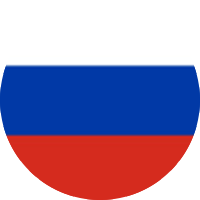25
2019
-
03
Textile and apparel industry - Japan's large-scale residential industry: the test of business management behind the hot sale of parity
The downward trend of Japan's economy continues, but in the residential industry, the retail enterprises of fair-price household goods headed by Muji and Bird-like products still achieve high performance and stock price growth: Muji achieved a V-shaped performance rebound in 2001, and the stock price then entered a high-speed rising range; Similar Bird has increased revenue for 20 consecutive years, increased for 14 consecutive years, and the stock price has increased nearly 22 times in the past 25 years.
The downward trend of Japan's economy continues, but in the residential industry, the retail enterprises of fair-price household goods headed by Muji and Bird-like products still achieve high performance and stock price growth: Muji achieved a V-shaped performance rebound in 2001, and the stock price then entered a high-speed rising range; Similar Bird has increased revenue for 20 consecutive years, increased for 14 consecutive years, and the stock price has increased nearly 22 times in the past 25 years.
Summarizing the success of Muji products, accurate positioning and refined product design are only the foundation; the key to continuing to achieve new success lies in the deep reform of internal management system and the institutionalization and routinization of reform. In addition, the reform tests the execution of enterprises.
Relying on parity positioning and simplified product design, the performance of Imprinted Fine Products grew rapidly from 1990 to 1999. Revenue increased from 24.5 billion yen in 1990 to 4.3 times, while net profit increased by 150 times. Before and after 2000, the disease of large enterprises became prominent, and net profit adjusted dramatically downward. After that, the growth rate returned to normal in two years. In addition to basic measures such as inventory clearance, a number of standardization reforms have been implemented, including standardization of store operation and headquarters business; focusing on the improvement of execution, details such as simplification of document flow and visualization of general management of data are refined; through the overall reform of store operation, warehousing logistics, procurement, shop leasing and headquarters business, the management and sales cost rate is controlled at 30%. Within that, the self-created retail analysis system integrates the original data system to achieve a high degree of control over the terminal situation.
Since the financial crisis, Muji has taken overseas business in China and other places as a new growth point, established large overseas warehousing centers to achieve real estate sales, and launched mobile APP to achieve drainage to offline physical stores.
The positioning of the bird-like fair market conforms to the trend of the consumer market; the vertical integration of manufacturing, logistics and sales provides a guarantee for commodity price strategy and quality control.
Similar Bird took the lead in introducing the concepts of home fashion and whole home in Japan, and quickly won the top rank in the home industry; from the whole process of commodity planning and design, raw material procurement, production and manufacturing, logistics warehousing, product sales and marketing promotion, it has a high degree of participation, and self-developed commodities accounted for 80%.
At present, there are procurement centers in 15 countries around the world, and the products produced overseas account for 70% of the company's sales. We have built a perfect self-owned logistics distribution network to ensure the supply of goods and reduce logistics costs.
Domestic textile industry has undergone the transformation of foreign trade agency, brand management and chain franchise. The channel has also developed from department stores in the 1990s to brand counters and roadside stores. Tracing back to the development history of home textile leading enterprises, it is the decisive transformation at many critical points that makes the enterprises turn around magnificently and promotes the overall upgrading of the domestic home textile industry. We believe that in the foreseeable future, the home textile industry will also undergo constant transformation and adjustment, and complete the evolution to the mainstream direction of everybody textile and everybody's residence. The new direction of the industry is not only parity, variety and brand diversification, but also the improvement of enterprise terminal retail capacity, internal management system and supply chain resource control.




